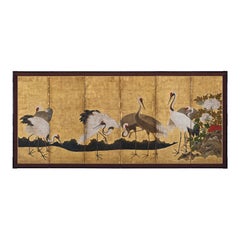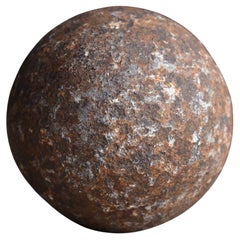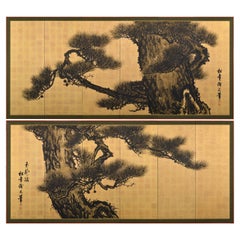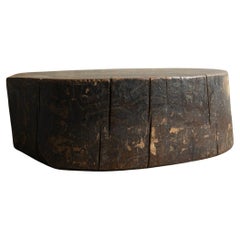Asia - Asian Art and Furniture
Mid-17th Century Japanese Edo Antique Asia - Asian Art and Furniture
Gold Leaf
Early 20th Century Japanese Taisho Asia - Asian Art and Furniture
Gold Leaf
1910s Japanese Showa Vintage Asia - Asian Art and Furniture
Iron
Early 20th Century Japanese Meiji Asia - Asian Art and Furniture
Gold Leaf
Early 20th Century Japanese Meiji Asia - Asian Art and Furniture
Chestnut
20th Century Japanese Taisho Asia - Asian Art and Furniture
Wood
Late 20th Century Japanese Showa Asia - Asian Art and Furniture
Cedar
15th Century and Earlier Cambodian Antique Asia - Asian Art and Furniture
Bronze
Late 19th Century Japanese Edo Antique Asia - Asian Art and Furniture
Cedar
Early 1900s Japanese Meiji Antique Asia - Asian Art and Furniture
Cedar, Lacquer
Early 20th Century Japanese Taisho Asia - Asian Art and Furniture
Iron
Late 19th Century Japanese Primitive Antique Asia - Asian Art and Furniture
Wood
18th Century Japanese Edo Antique Asia - Asian Art and Furniture
Gold Leaf
Early 1900s Balinese Folk Art Antique Asia - Asian Art and Furniture
Cotton, Paint
Mid-18th Century Japanese Edo Antique Asia - Asian Art and Furniture
Gold Leaf
Late 19th Century Japanese Taisho Antique Asia - Asian Art and Furniture
Cotton, Linen, Straw
20th Century Japanese Showa Asia - Asian Art and Furniture
Limestone
Early 20th Century Japanese Meiji Asia - Asian Art and Furniture
Pine
Early 20th Century Japanese Taisho Asia - Asian Art and Furniture
Silk
15th Century and Earlier Chinese Antique Asia - Asian Art and Furniture
Pottery
Mid-20th Century Japanese Primitive Asia - Asian Art and Furniture
Wood
20th Century Japanese Taisho Asia - Asian Art and Furniture
Wood
20th Century Japanese Showa Asia - Asian Art and Furniture
Plaster, Clay
Early 20th Century Japanese Taisho Asia - Asian Art and Furniture
Silk
20th Century Japanese Showa Asia - Asian Art and Furniture
Bronze
20th Century Japanese Showa Asia - Asian Art and Furniture
Other
18th Century Japanese Edo Antique Asia - Asian Art and Furniture
Cypress
20th Century Japanese Asia - Asian Art and Furniture
Acrylic, Wood, Paper
Late 18th Century Japanese Edo Antique Asia - Asian Art and Furniture
Silver Leaf
15th Century and Earlier Japanese Other Antique Asia - Asian Art and Furniture
Pottery
Early 20th Century Japanese Showa Asia - Asian Art and Furniture
Gold Leaf
21st Century and Contemporary Indian Asia - Asian Art and Furniture
Linen
Early 20th Century Japanese Showa Asia - Asian Art and Furniture
Stone, Granite
Late 19th Century Japanese Meiji Antique Asia - Asian Art and Furniture
Silk
Early 19th Century Japanese Edo Antique Asia - Asian Art and Furniture
Gold Leaf
Early 20th Century Japanese Asia - Asian Art and Furniture
Stone, Granite
Mid-19th Century Japanese Edo Antique Asia - Asian Art and Furniture
Paper
15th Century and Earlier Japanese Other Antique Asia - Asian Art and Furniture
Sandstone
Early 19th Century Japanese Edo Antique Asia - Asian Art and Furniture
Gold Leaf
Late 20th Century Japanese Other Asia - Asian Art and Furniture
Stone, Concrete
Early 20th Century Japanese Meiji Asia - Asian Art and Furniture
Cedar
1930s Japanese Showa Vintage Asia - Asian Art and Furniture
Iron
21st Century and Contemporary Chinese Asia - Asian Art and Furniture
Silk
Late 17th Century Japanese Edo Antique Asia - Asian Art and Furniture
Gold Leaf
Mid-18th Century Japanese Edo Antique Asia - Asian Art and Furniture
Gold Leaf
21st Century and Contemporary Chinese Asia - Asian Art and Furniture
Gold Leaf
21st Century and Contemporary Chinese Asia - Asian Art and Furniture
Gold Leaf
21st Century and Contemporary Chinese Asia - Asian Art and Furniture
Silk
15th Century and Earlier Chinese Antique Asia - Asian Art and Furniture
Pottery
Mid-19th Century Asian Edo Antique Asia - Asian Art and Furniture
Silk
21st Century and Contemporary Chinese Asia - Asian Art and Furniture
Gold Leaf
21st Century and Contemporary Chinese Asia - Asian Art and Furniture
Paper
1890s Japanese Meiji Antique Asia - Asian Art and Furniture
Gold Leaf
Late 20th Century Japanese Showa Asia - Asian Art and Furniture
Wood
18th Century Japanese Edo Antique Asia - Asian Art and Furniture
Metal
21st Century and Contemporary Chinese Asia - Asian Art and Furniture
Paper
Mid-17th Century Japanese Edo Antique Asia - Asian Art and Furniture
Paper
Late 19th Century Japanese Primitive Antique Asia - Asian Art and Furniture
Copper
1950s Japanese Showa Vintage Asia - Asian Art and Furniture
Cedar
21st Century and Contemporary Chinese Asia - Asian Art and Furniture
Gold Leaf
Read More
Symbols of Happiness and Rebirth Adorn This Japanese Satsuma Bowl
Decorated with white cranes and the sought-after thousand-butterflies motif, the Meiji-period vessel offers both a celebration of traditional aesthetics and a clear reflection of the era’s appetite for exquisite export pieces.
Chicago’s Pagoda Red Has a Spirited Mix of Asian Antiques and Bold New Art
For 25 years, gallerist Betsy Nathan has leveraged her keen eye and key connections to bring a unique selection of rare finds to the market.
In L.A., Gallerist JF Chen Has Long Championed Eclectic Blue-Chip Design
Now working alongside his daughter Bianca, dealer Joel Chen has presented a most covetable array of antiques, art and contemporary creations for more than 40 years.
12 Calming Spaces Inspired by Japanese Design
From cherry-blossom-adorned walls paired with glamorous lighting to wood-paneled ceilings above checkerboard-patterned chairs, these 12 spaces seamlessly blend Eastern and Western aesthetics.
Rodrigo Rivero Lake’s Mexico City Showroom Is a Museum-Worthy Trove of Spanish Colonial and Asian Antiques
The dealer and curator has spent the past 50 years amassing a collection of exceptional art, furniture and architectural elements that trace the cultural influence of the Spanish empire from Europe to the Americas and beyond.
16 Refined Asian-Inspired Interiors
These spaces exemplify how Eastern elements elevate a home's decor.





